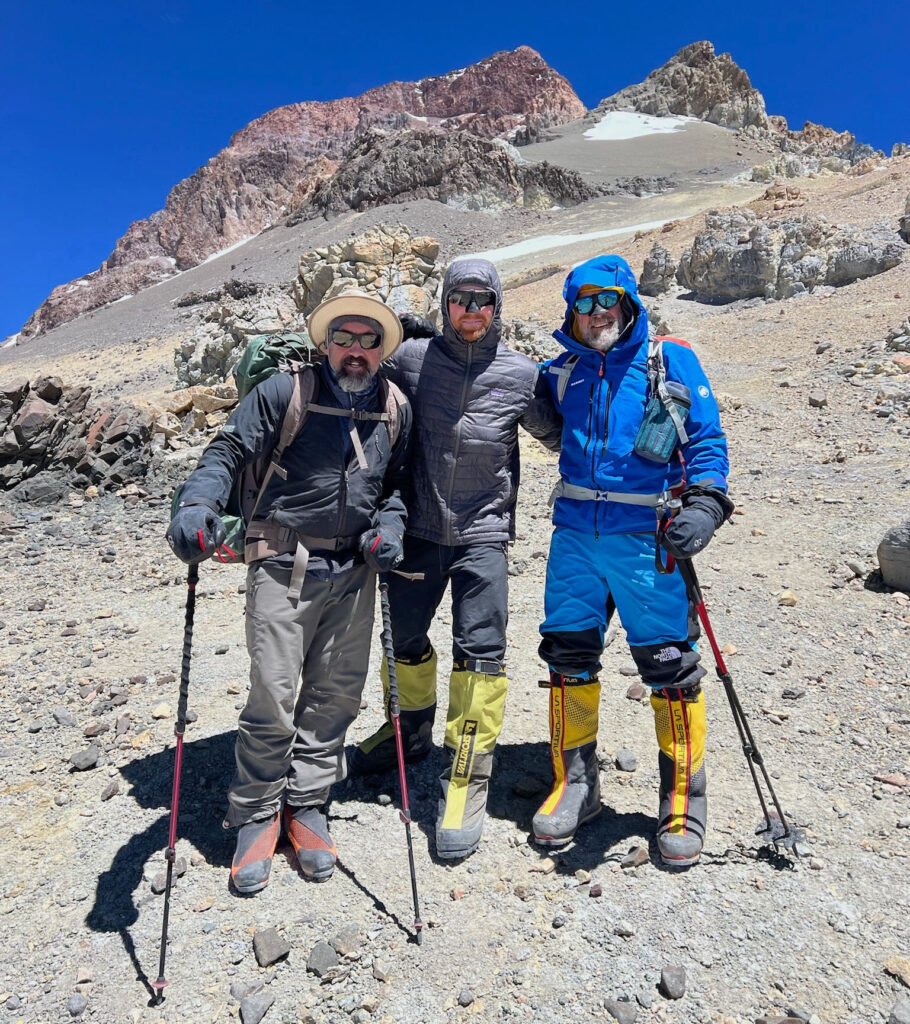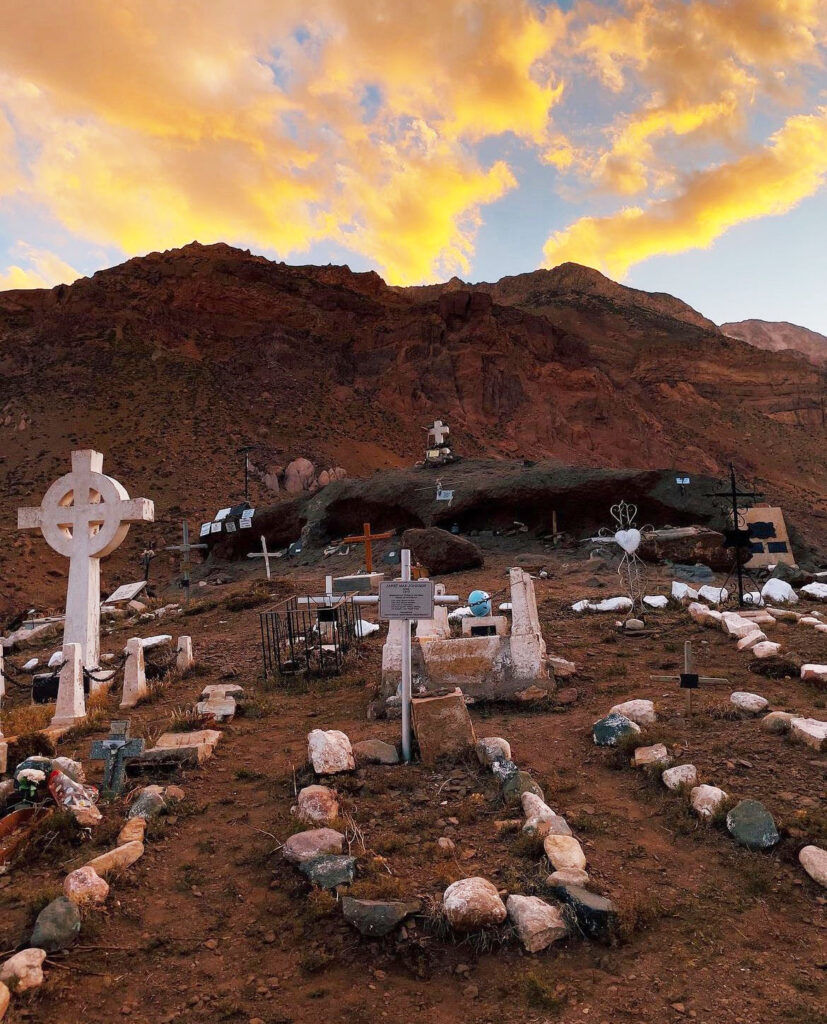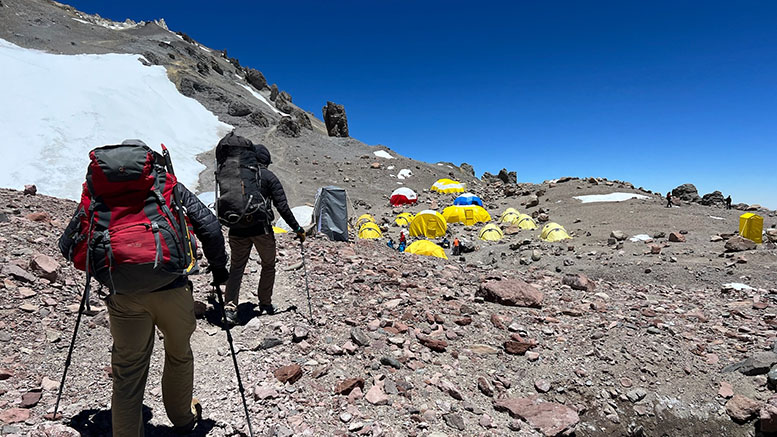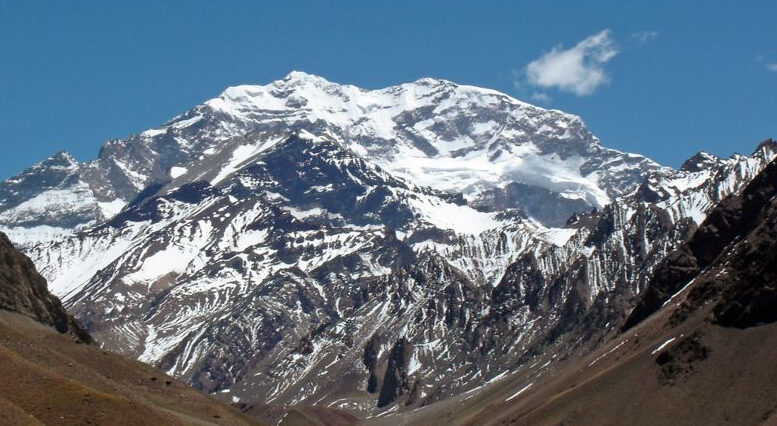Note from the author: This story is dedicated to the students of Northern Essex Community College (NECC) in Massachusetts and to community college students everywhere.
I was a community college student, and now I am a community college president. I have spent most of my career at community colleges and, although I recognize the challenges our students face, I continue to marvel at what they are able to overcome as they strive toward their goals.
I am also an adventure athlete who loves running, hiking, skiing, kayaking, obstacle course races, long-distance relays — really anything that gets me outside and moving. A few years ago, in January 2020, my hunger for adventure led me, my brother and 10 other hardy souls from around the world on an expedition to the summit of Mount Kilimanjaro in Tanzania, Africa.

On the plane ride home, I wrote, “Jambo! Climbing Lssons for Community College Students from the Summit of Mt. Kilimanjaro,” and we started planning our next big expedition: A trek to the summit of Mount Aconcagua in the Andes Mountain Range of Argentina.
At 22,838 feet, Mount Aconcagua is a few thousand feet higher than Mount Kilimanjaro and the tallest mountain in the world, other than Mount Everest and a few others in the Himalayan Range. It is often the next challenge climbers tackle after Kilimanjaro, sometimes on their way to conquering the “Seven Summits,” the highest mountains on each of Earth’s seven continents.
A few weeks after we returned home from Africa, the Covid pandemic turned the world upside-down, and our plans were put on hold for a while, but finally, a few days ago, we completed our Andes adventure, and along with it, learned a few more helpful, and humbling, “Climbing lessons for community college students.”
Proper preparation prevents poor performance
Benjamin Franklin famously pronounced that, “An ounce of prevention is worth a pound of cure.” Not to be outdone, Abraham Lincoln wisely advised, “Give me six hours to chop down a tree, and I will spend the first four sharpening the axe.” However you say it, preparation matters, and can make the difference between a successful expedition and a disastrous one.
Mount Aconcagua is not a terribly “technical” mountain to climb. Although they may be handy in some spots on the mountain, ropes, slings, harnesses, pins and other climbing gear are not strictly necessary; and unlike Mount Everest, K2 or other perpetual wintery peaks, there are few, if any, deep, icy crevasses to cross during the brief climbing season on Aconcagua, in December and January, at the height of summer in Argentina.
Depending on your route, however, it can be a long trek, at least 40 miles, over steep, rocky terrain, at extremely high altitude, sometimes in strong, cold winds, with several pounds of gear on your back.
To prepare for the challenges we would face, my brothers and I trained physically: We added distance to our runs and weight to our CrossFit gym sessions. We took extra trips up into the mountains, like a 30-mile stretch of the Appalachian Trail over some of its steepest, rockiest terrain; and a 45-mile trek along the Continental Divide that included climbing 14,000-foot-high Fremont Peak in Wyoming.
We also hired Aconcagua Mountain Guides and paid careful attention to the list of gear they told us to bring. We had some of it from previous treks, but needed to pick up some specialty items, like 8000-metre boots and heavy down parkas and mittens to protect us from the bitter cold winds; glacier glasses to prevent snow blindness; and climbing helmets because of frequent rockslides on the mountain.
We spent nearly two weeks hiking, carrying, camping and acclimatizing, and there were moments that stretched us to our limits, but we completed our traverse around Mount Aconcagua and made it back safely, thanks to our careful preparation.
How it applies to our students
NECC’s campuses in Haverhill and Lawrence are along the Merrimack River, just a few feet above sea level. We certainly get our share of snow and chilly winter days, but for the most part, the trek from our parking lots or bus stops to our classroom buildings doesn’t require much physical fitness training or special equipment. Still, proper preparation for our students can also make the difference between successfully completing classes and degrees or struggling and perhaps falling behind in the face of different, equally difficult, challenges.
Some of the most important steps our students can take to prepare themselves for the rigor of a new semester include:
- Completing application materials and financial aid forms as far in advance as possible.
- Meeting with an academic advisor (our version of a mountain guide) to discuss career planning and class scheduling.
- Making arrangements for child care and a work schedule that leaves plenty of room for classes, homework and extracurricular activities.
- Buying or borrowing textbooks and other supplies before classes begin.
- Making sure transportation (for in-person classes) and technology (for online or hybrid classes) works the way it needs to work.
Students who do all of this are much likelier to complete their “traverse” of their classes each semester and make it “safely” to the other side with grades, credits and transcripts intact.
Take care of yourself, and listen to your guide
As we were completing our gear check at a climber’s hotel in Mendoza, Argentina the day before we left for our expedition, Aconcagua Mountain Guides President Federico “Freddy” Simonovich offered us this advice: “All of this equipment is important, and so was the training you did to get here. But now, there are only two things you must do to reach the summit of Aconcagua: You must drink, and you must endure.”
By “drink,” of course, he meant keep hydrated, which can be a challenge at high altitude, where your body loses water through respiration twice as fast as it does at sea level, and you have to filter water from streams along the way or melt ice and snow to fill your Nalgene bottle; and by “endure” he meant, well, tough it out and survive.

Gonzalo, the guide who would spend the next couple of weeks with us, and who had been on nearly 80 Aconcagua expeditions, added: “Everything on the mountain is intense. When you are hot, you are really hot. When you are cold, you are really cold. When you are tired, you are really tired.” As we soon discovered, truer words were never spoken.
We had prepared as much as we could prepare, and now our task was to actually climb the mountain and, as Federico encouraged us, “endure” the trials ahead. To do that, we needed to pay constant attention not just to the conditions on the mountain, but to the conditions of our bodies and our minds, to nourishing them and to taking care of them; and to following the advice of our guides, who knew much more about this strange environment than we did (not always easy for three dedicated do-it-yourselfers, but very, very necessary).
At higher altitudes, the barometric pressure drops considerably and oxygen molecules in the air are farther apart, so the amount of oxygen you are able to take into your body, bloodstream and brain with each breath is reduced. At sea level, around 21% of each breath you take is filled with rich, blood- and brain-nourishing oxygen, but for every 1,000 feet you climb a mountain, oxygen is reduced by around .5%.
On Aconcagua, our guide, Gonzalo, carried a pulse oximeter, and we regularly checked our heart rates and blood oxygen levels. The base camps on each side of the mountain, Plaza Argentina and Plaza de Mulas (the second largest base camp in the world after Mount Everest’s), also have medical tents with doctors posted, and a helicopter that regularly delivers supplies to the camps and, when necessary in an emergency, flies suffering climbers back down to lower altitudes.
We were constantly reminded to drink (at least three to four liters of water each day), to move very slowly when climbing and to rest often, including two to three days of complete rest in base camps built into our itinerary to provide time for oxygen-deprived muscles to mend, and to store energy for the next push.
How it applies to the classroom
A college classroom may not seem as intimidating or dangerous as a high-altitude alpine desert, but for many students, particularly those who may be the first in their families to go to college, it can feel just as threatening.
Lengthy, legal-sounding course syllabi, social isolation, low self-esteem or “imposter syndrome,” financial challenges, and other worries loom large for most community college students and, like climbing a mountain, the farther up they go without the right care and support, the more likely they are to need rescuing.
The same rules apply: To “endure” and succeed in their classes and degrees, students need to pay constant attention not just to the conditions in the classrooms, but to the conditions of their bodies and their minds, to nourishing them and to taking care of them; and to following the advice of their “guides,” the teachers and advisors who know the terrain so well, and who are there specifically to help students along the way.
Like my brothers and I (proud do-it-yourselfers), students are better off when they ask for the help they need from professors, counselors and tutors, and when they seek out staff in dedicated student support service roles. Federally funded TRIO programs like NECC’s wonderfully successful PACE program for first-generation students, or SOAR program are great places to start.
Rockslides, avalanches and ‘no-fall zones’
Two weeks before my brothers and I boarded the plane for South America, the New York Times published “Ghosts on the Glacier,” a story about the deaths of two climbers, Janet Johnson and John Cooper, on Mount Aconcagua in January 1973. Johnson and Cooper were part of a 10-person expedition attempting to summit the mountain via the treacherous Polish Glacier route, when things went very wrong. To this day, no one is exactly sure how they died. Cooper’s body was recovered later that year. Johnson’s was not found until 1975.
Then, in February 2020, more of Johnson’s remains, her backpack and her camera were discovered in the receding glacier several hundred feet below the summit. While the 50-year-old film developed from her camera did not provide evidence of what happened to the climbers, it did add to the perilous legend of Aconcagua, sometimes called the “Mountain of Death.”
Indeed, each season, several climbers perish on the mountain; so many over the years that there is actually a climber’s cemetery near the trailhead where Janet Johnson herself is buried. During our expedition, two climbers from another party had to be airlifted off the mountain, and another died in camp.

Dangers on the mountain range from modest, usually manageable challenges like rockslides (which are happening almost constantly both underfoot and on the rocky crests overhead) and extremely hot or cold temperatures; to more serious perils that can end an expedition, like avalanches, HAPE and HACE; to literal “no-fall zones” (stretches of trail where a fall is certain to be fatal).
To protect ourselves as much as possible, we traveled at a pace much slower than we would on other mountains at lower elevation. We were equipped with climbing helmets and ice axes; and most importantly, we constantly checked on each other, watching for signs of disorientation or distress.
The trek pushed us to our limits, and there were definitely “rockslide” experiences for each of us, and even a few borderline “avalanche” moments, but thankfully, we all made it through the no-fall zones and made it safely back again.
Risky trails for students
Community college students regularly face their own versions of these mountain dangers. Bombing a test (math and science courses present some of the greatest challenges), a schedule change at work, or a costly car repair are “rockslides” that can quickly throw students off balance and lead to greater difficulties.
Failing a class, losing a job or an extended illness are “avalanches” that frequently cause students to “stop out” for a semester or longer, or drop out entirely. Failing a few classes or running out of financial aid can be like taking a tumble in a “no-fall zone”: very often “fatal” to students’ persistence in college.
Preparation, taking care of yourself, and listening to the guidance of teachers and advisors will certainly help in these situations; and, like my brothers and I on the mountain, so will the support of other students, family and friends.
Moments of crises are not the time to go it alone: Seeking someone else’s listening ear, advice, advocacy or support is not a sign of weakness; it is acknowledgement that, when it comes to life’s greatest challenges, like mountain climbing and completing a college degree, we’re all in it together, and the help you receive today, you may be offering to someone else tomorrow.
Accomplish your own summit
On the evening of our first night on the mountain at Camp Pampa de Leñas, the arrierios (mule drivers) treated us to an authentic Argentinian gaucho-style barbecue: lots of meat grilled over an open fire (with a couple of vegetables tossed on for good measure).
As we gratefully munched away, our guide, Gonzalo, offered a toast: “May we have strong legs and good weather,” he encouraged, “and may everyone accomplish their own summit.”
At that moment, my brothers and I were still fixed on the only summit we had been planning toward for nearly four years: the very top of the mountain. We were several days, many miles and thousands of feet of elevation gain away from learning that the Winds of Aconcagua would prevent us from reaching it.
The reality is this: In a normal climbing season, only about 30% of expeditions make it to the summit of Mount Aconcagua. When they don’t, sometimes it is because the climbers themselves were not prepared for the rigors of the mountain, or they succumb to high-altitude illness or injury, though more often it is because of the weather. Besides its towering height and temperature extremes, Mount Aconcagua is also not far from the Pacific Ocean, and weather patterns create almost perpetually strong winds, particularly on the upper half of the mountain.
At sea level, walking along the Merrimack River in a 35-mph wind is uncomfortable and challenging, but possible (as long as you have a chin strap for your Red Sox cap). Above 20,000 feet though, after several days of carrying a heavy pack, dressed in thick winter expedition gear, light-headed from the effects of a third the oxygen you normally breathe, and coordinating the use of trekking poles, an ice axe and other gear, one strong gust can easily blow you off the mountain.

This season has been a particularly harsh one: By mid-January, when we reached the high camps, only two expeditions had successfully made it to the summit, and the weather forecast for a week ahead of us called for incredibly strong winds and unsurvivable low temperatures.
We made it as far as Campamento Cólera (the “Angry Camp”). At 19,586 feet, it is slightly higher than the summit of Mount Kilimanjaro. When the winds turn calm and summitting windows open, Campamento Cólera is host to dozens of tents and scores of climbers either preparing to make their final push to the top, or recuperating after their attempts. The day we arrived, there were no tents and very few people. Everyone knew the summit was out of reach for a while.
We rested, hydrated, ate a few energy bars, took a few pictures, then headed back down the mountain, toward Plaza de Mulas, 6,000 feet below us on the other side. We had not reached the summit we were aiming for, but climbed higher than we had ever climbed before, and completed the challenging “Polish Traverse” route, completely around the giant mountain.
In the spirit of Gonzalo’s toast, we had accomplished our own summit, and it was still a “peak” experience for all of us.
Students’ summit goals
Most students at NECC arrive on campus intending to complete an associate degree and either go right to work in their chosen career field, or transfer to a four-year university to continue their education. Ideally, they reach that “summit” in two to three years.
Like climbers on Aconcagua, most do not.
Back in 2012, my first year as president at NECC’s annual graduation ceremony, I handed a degree to a woman who took her first class with us in 1967 (the year I was born). She did not take classes continuously for 45 years. Instead, she took a few classes, worked to save for more, raised a family, lost a husband, changed jobs a few times and experienced a hundred other things that life threw her way before she was finally able to complete her last class and walk across that stage.
Her story was an unusual one, but not unique. Two-thirds of our students attend part-time, and the average amount of time it took the Class of 2023 to complete their degrees was five years — the same summit, just a little later than expected.
Even students who take classes but don’t finish degrees, or who complete short-term certificate programs, are more likely to be employed and to earn higher salaries than students who do not attend college at all — a different summit, but still a meaningful and rewarding one.
As we learned from several climbers we met on Aconcagua who were returning for a second or third time in an attempt to reach the summit, there is always tomorrow to try again, and to push farther. The mountain will be waiting….





